I’m not one to settle for less when it comes to my home, and neither should you. OKNA Windows are a game-changer—blending style, energy efficiency, and durability that make them worth every penny.
From their sleek designs to their ability to slash your energy bills, these vinyl windows deliver where it counts. Whether you’re renovating or building new, OKNA’s quality and customization options make them a standout.
Trust me, I’ve seen the difference they make, and I’m excited to share why you should consider them for your next project.
My Personal Journey With OKNA Windows
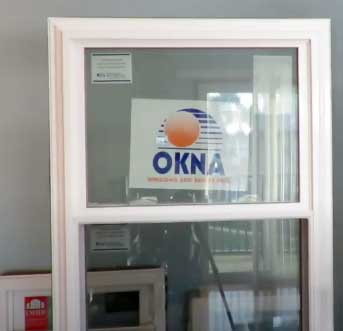
When I decided to replace the drafty, outdated windows in my Midwest home, I was overwhelmed by options.
Pella, Andersen, Soft-Lite—the list was endless. Then I stumbled across OKNA, a brand I hadn’t heard much about but kept popping up in contractor forums.
Intrigued, I called a local dealer, and soon, a rep was at my house with a sample of the OKNA 600 series.
I was impressed right away. The window felt sturdy, not like the flimsy vinyl I’d seen elsewhere.
The sleek design and smooth operation had me sold, but I wanted to see how they’d perform.
Fast forward to installation day: my contractor swapped out 12 double-hung windows and a sliding patio door in a single day. The process was seamless, and the crew was meticulous, cleaning up every speck of debris.
The first thing I noticed post-installation was the silence—outside noise, like the neighbor’s lawnmower, was barely audible. Then came winter, and I was blown away. My drafty living room? Cozy as ever. My energy bill dropped noticeably, which was a huge win.
The windows looked fantastic, too, with clean lines that gave my home a modern edge. I opted for a cocoa exterior to match my home’s vibe, and the customization options made it feel personal.
Sure, there was a minor hiccup—one sash arrived slightly misaligned—but OKNA’s customer service sent a replacement within days, no questions asked. That kind of responsiveness sealed the deal for me. After a year of living with these windows, I can say they’ve transformed my home’s comfort and style.
The Pros of OKNA Windows
- Energy Efficiency That Saves You Money

Let’s talk about keeping your wallet happy.
OKNA Windows are engineered with energy efficiency in mind, and I’ve seen the proof in my utility bills.
Their HeatSeal warm-edge spacer system and Low-E glass coatings work together to keep heat in during winter and out during summer.
With U-factors as low as 0.22 and Solar Heat Gain Coefficients (SHGC) around 0.19, these windows exceed ENERGY STAR standards.
Living in the Midwest, where temperatures swing from freezing to sweltering, I’ve noticed my HVAC system isn’t working overtime anymore.
That’s real savings, month after month.
- Durability That Stands the Test of Time
You want windows that can handle whatever Mother Nature throws at them, right? OKNA’s fusion-welded vinyl frames and sashes are built like tanks. No warping, rotting, or peeling here—unlike wood windows that demand constant upkeep.
The aluminum reinforcement in their frames adds extra strength, so they hold up against harsh winds and storms. I’ve had mine for a year now, and they still look brand new, even after a brutal Midwest winter.
Plus, the triple weatherstripping keeps dust and drafts at bay, making my home feel like a fortress.
- Aesthetic Appeal for Every Home
I’m a bit of a design nerd, so looks matter to me. OKNA delivers with a range of styles—double-hung, casement, bay, bow, and more—that fit any home’s vibe. You can choose from eight exterior colors (I went with cocoa for a warm, modern look) and two interior finishes.
The slim profiles maximize glass area, letting in tons of natural light without sacrificing strength. My living room feels bigger and brighter, and the windows blend seamlessly with my home’s architecture.
Whether you’re into classic or contemporary, OKNA has options to make your house pop.
- Noise Reduction for Peace and Quiet
If you’ve ever lived near a busy street or had noisy neighbors, you’ll appreciate this. OKNA’s double-pane (or optional triple-pane) glass, combined with their tight seals, cuts down on outside noise like nobody’s business. I used to hear every car horn and dog bark, but now my home is a quiet oasis.
The optional laminated glass takes it up a notch, perfect if you’re in a bustling area. It’s not just about comfort—it’s about creating a space where you can actually relax.
- Customization to Match Your Vision
One thing I love about OKNA is how much control you have. Want obscure glass for privacy? Done. Need a specific grid pattern to match your home’s character? They’ve got colonial, prairie, and diamond options.
You can even upgrade to triple-pane glass with argon or krypton fill for extra insulation. I customized mine with a deluxe glass package, and it’s been worth every penny for the energy savings and comfort. OKNA lets you tailor your windows to your exact needs, which makes the investment feel personal.
The Not-So-Good Parts of OKNA Windows
- Higher Price Tag
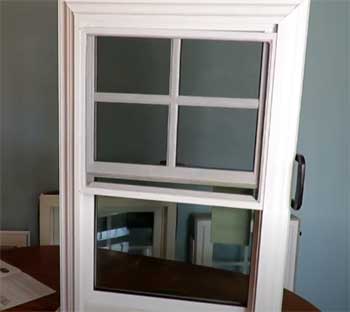
Let’s be real—OKNA isn’t the cheapest option out there. Depending on the series and features, you’re looking at $400 to $900 per window, including installation.
My 12 windows and patio door set me back around $8,500, which stung a bit upfront.
Compared to budget brands like Window World, OKNA feels pricey.
But here’s the thing: the energy savings and durability make it a long-term win. If you’re on a tight budget, though, you might need to save up or explore their more affordable 400 series.
- Limited Dealer Network
Finding an OKNA dealer can be a hassle, especially if you don’t live near a major city. Unlike bigger brands like Pella or Andersen, OKNA’s network is smaller, which means you might have to hunt for a certified installer.
I got lucky with a great contractor nearby, but I’ve heard stories of folks struggling to find local support. If something goes wrong, you’ll want a dealer who’s responsive, so do your homework on their reputation before signing up.
- Occasional Quality Control Hiccups
While my experience was mostly smooth, I’ve read about some folks dealing with quality control issues, like misaligned sashes or crooked grids. In my case, one sash arrived slightly off, but OKNA fixed it quickly.
Apparently, their move to a new factory a while back caused some hiccups, though they seem to be ironing things out. Still, it’s worth double-checking your order during installation to catch any issues early. Nobody wants to deal with cosmetic flaws, even if they’re rare.
- Past Marketing Missteps
OKNA’s had some baggage with a class-action lawsuit a few years ago over misleading marketing claims. It’s settled now, and it didn’t affect my decision, but it’s worth noting if you’re skeptical about brand trust.
I haven’t experienced any shady sales tactics myself—the dealer I worked with was upfront and no-pressure—but it’s a reminder to read the fine print and work with reputable installers. Transparency matters, and OKNA’s customer service has been solid in my experience.
Maintenance Tips For OKNA Windows
- Regular Cleaning for Lasting Shine
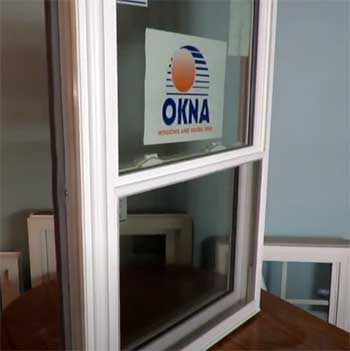
Keeping your OKNA windows looking pristine is easy, but it takes a little effort.
I clean mine every few months with a mild dish soap and water mix—just a tablespoon of soap in a bucket of warm water does the trick.
Use a soft cloth or sponge to wipe down the frames and glass, avoiding abrasive scrubbers that could scratch the vinyl.
For stubborn spots, a vinegar-water solution works wonders. Rinse thoroughly and dry with a microfiber cloth to prevent streaks. Trust me, clean windows make your whole house feel brighter.
- Inspecting Seals and Weatherstripping
To keep those energy savings rolling, check your window seals and weatherstripping annually. I run my hand along the edges during a windy day to feel for drafts. If you notice any gaps, a quick call to your installer can get it fixed under warranty.
OKNA’s triple weatherstripping is top-notch, but dirt or wear can weaken it over time. Clean the strips with a damp cloth and avoid harsh chemicals that could degrade the material. This small habit keeps your windows airtight and efficient.
- Lubricating Moving Parts
If you’ve got double-hung or casement windows like mine, lubricate the tracks and hinges every year or so. I use a silicone-based spray lubricant—never WD-40, as it can attract dust. Just a quick spritz on the tracks and a wipe-down keeps them gliding smoothly.
For casements, apply a dab of lubricant to the hinge points and crank mechanisms. It takes five minutes and prevents that annoying stickiness that can develop over time. Your windows will thank you with years of easy operation.
- Checking for Condensation Issues
Condensation between panes is a red flag for seal failure, but it’s rare with OKNA’s HeatSeal spacers. I check mine during humid weather by looking for fogging inside the glass. If you spot it, contact your installer ASAP—OKNA’s warranty should cover it.
To prevent exterior condensation, keep the area around your windows clear of debris and ensure proper ventilation in your home. I run a dehumidifier in my basement during summer, and it’s helped keep my windows crystal clear.
- Protecting the Finish
OKNA’s vinyl finishes are low-maintenance, but they’re not invincible. Avoid using harsh cleaners like bleach or ammonia, which can discolor the frames. If you notice fading or chipping (rare, but possible), reach out to OKNA’s customer service.
I’ve found that a quick wipe-down with a damp cloth keeps the cocoa finish on my windows looking sharp. If you live in a sunny area, consider UV-protective window film to extend the life of the finish. It’s an extra step, but it’s worth it for longevity.
Comparing OKNA To Other Brands
Let’s see how OKNA Windows stack up against Ply Gem Windows, Sun Windows, and Universal Windows Direct. I’ve done my homework to help you decide which brand fits your home best, focusing on key factors like energy efficiency, durability, aesthetics, and cost.
- OKNA Vs. Ply Gem Windows: Energy Efficiency and Cost
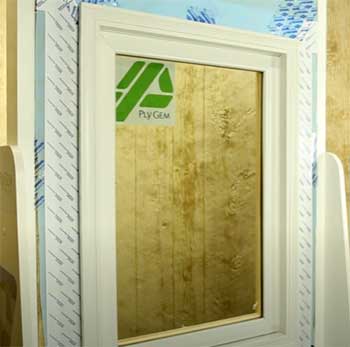
Ply Gem’s Pro and Premium series are popular for their affordability, with prices ranging from $300 to $700 per window, including installation—cheaper than OKNA’s $400–$900 range.
Ply Gem’s vinyl windows offer decent energy efficiency, with U-factors around 0.25–0.30, but OKNA’s HeatSeal spacer and Low-E glass (U-factor as low as 0.22) outperform them, especially in extreme climates like my Midwest winters.
My OKNA windows slashed my energy bills more than I expected, and while Ply Gem’s savings are solid, they don’t match OKNA’s edge.
If budget’s your priority, Ply Gem’s a good pick, but OKNA’s efficiency makes it worth the extra cost for long-term savings.
- OKNA Vs. Sun Windows: Durability and Maintenance
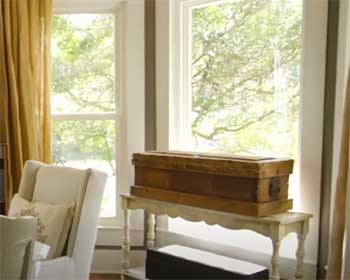
Sun Windows, based in Kentucky, specializes in wood, aluminum-clad, and vinyl windows.
Their vinyl options are durable, with strong frames that resist warping, but they require more maintenance than OKNA’s fusion-welded vinyl, which is virtually maintenance-free.
Sun’s wood windows, while gorgeous, need regular painting or staining—something I wasn’t up for.
OKNA’s triple weatherstripping and aluminum-reinforced frames held up flawlessly through a stormy year, while Sun’s vinyl felt less robust in showroom samples.
Sun’s pricing ($450–$800) is close to OKNA’s, but OKNA’s low upkeep and storm-ready build give it the upper hand for hassle-free durability.
- OKNA Vs. Universal Windows Direct: Aesthetics and Customization
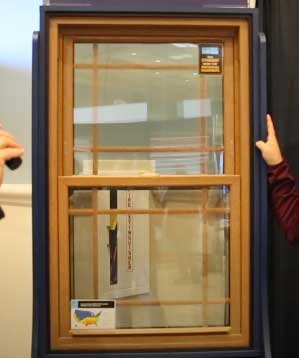
Universal Windows Direct offers budget-friendly vinyl windows, like their UniShield line, with prices from $350 to $650 per window—lower than OKNA’s.
Their customization options, though, are limited compared to OKNA’s eight exterior colors, multiple grid patterns, and glass upgrades like triple-pane with krypton fill.
I went all-in on OKNA’s cocoa finish and prairie grids to match my home’s vibe, and the result was stunning.
Universal’s designs are simpler, with fewer color and grid choices, which might not cut it if you’re after a unique look.
For style-conscious homeowners like me, OKNA’s flexibility makes it the clear winner, even if Universal saves you a few bucks.
- OKNA Vs. All Three: Noise Reduction and Warranty
Noise reduction is where OKNA shines. Its double- or triple-pane glass and tight seals turned my noisy street into a quiet haven. Ply Gem’s standard double-pane glass is decent but doesn’t match OKNA’s optional laminated glass for soundproofing.
Sun Windows’ vinyl options are quieter than their wood ones, but still fall short of OKNA’s performance. Universal’s UniShield windows offer basic noise reduction, but they’re not on OKNA’s level for urban homes. Warranty-wise, OKNA’s limited lifetime coverage on frames, sashes, and glass is competitive.
Ply Gem and Universal offer similar lifetime warranties, but Sun’s warranty is shorter for wood components (10 years). OKNA’s responsive customer service, like fixing my misaligned sash in days, gives it an edge in reliability.
Overall, OKNA stands out for its balance of energy efficiency, durability, and customization, though it’s pricier than Ply Gem and Universal. Sun Windows offers variety but demands more upkeep. Your choice depends on what you value most—budget, style, or performance—but OKNA’s premium feel and long-term benefits won me over.
Frequently Asked Questions (FAQ)
OKNA Windows is manufactured by OKNA Windows and Doors, a company based in Bristol, Pennsylvania. Founded in 1994 by Seval Ozbey, they’ve built a reputation for high-quality vinyl windows and doors, focusing on energy efficiency and durability. Their production facility uses state-of-the-art tech and partners with trusted material suppliers to ensure consistent quality.
There’s no one-size-fits-all answer here—it depends on your needs. OKNA’s a top pick for vinyl windows, thanks to their energy efficiency, durability, and customization. Pella and Andersen are great for broader material options, while Soft-Lite and ProVia offer similar vinyl quality at competitive prices. Research your local installers and prioritize energy ratings, warranty, and style to find your best fit.
OKNA offers a limited lifetime warranty on most of their window series, covering defects in materials and workmanship. This includes the frame, sash, hardware, and glass, though specifics vary by series (e.g., 400, 500, 600). Check with your dealer for the exact terms, as exclusions like glass breakage may apply. Always read the warranty document to confirm coverage.
Yes, OKNA Windows meet or exceed ENERGY STAR standards across their series, including the 400, 500, 600, and 800 lines. With low U-factors (as low as 0.22) and SHGC values, they’re designed for energy efficiency in various climates. You can confirm certification for your specific model with your dealer to ensure it meets regional requirements.
Why OKNA Windows Are Worth Your Investment?
You’ve heard my story, and I’ll say it again: OKNA Windows are a fantastic choice for any homeowner. Their energy efficiency saves you money, their durability stands up to the elements, and their style elevates your home’s look.
Sure, they come with a higher price tag and a smaller dealer network, but the long-term benefits outweigh the drawbacks. If you want windows that perform, look great, and last for years, OKNA’s got you covered. Make the smart choice and upgrade your home with OKNA today.
